
The Classroom in 2050

Inquiry and Edtech learning
This is a category for the EdTech course. Please add this category in addition to the relevant edtech assignment category(ies).

I have been working hard…and quilting, which is actually very satisfying and fun! I have created a block for the quilt. I need 6 of these to stitch together into the quilt front, so only 5 more to go!
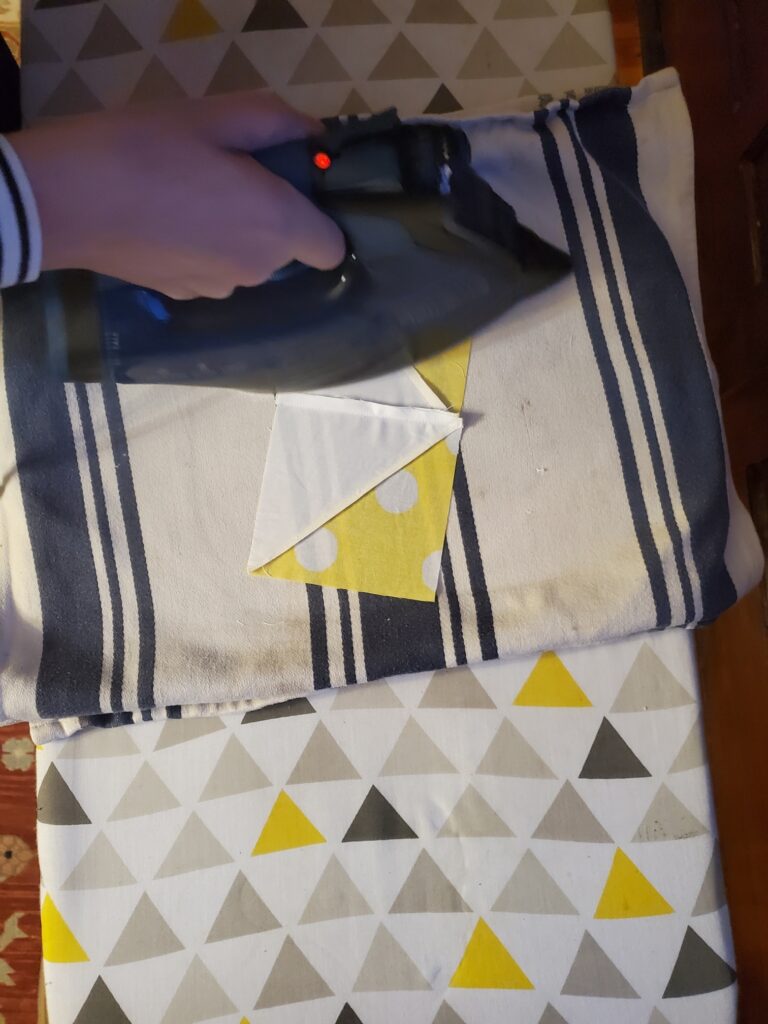
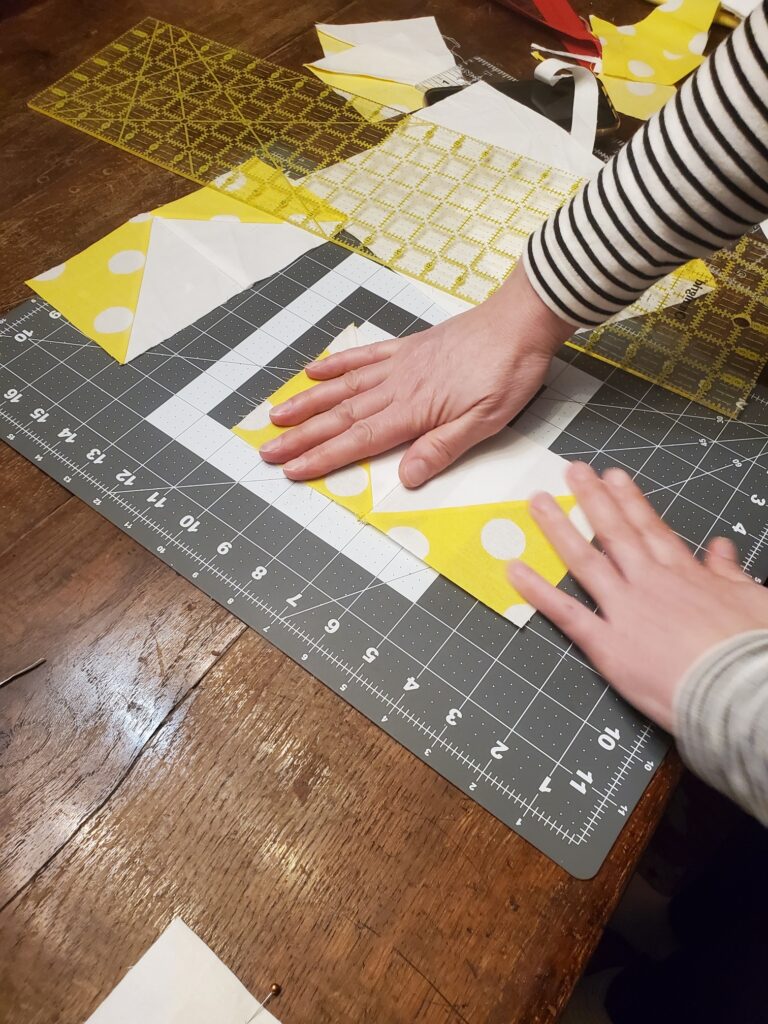
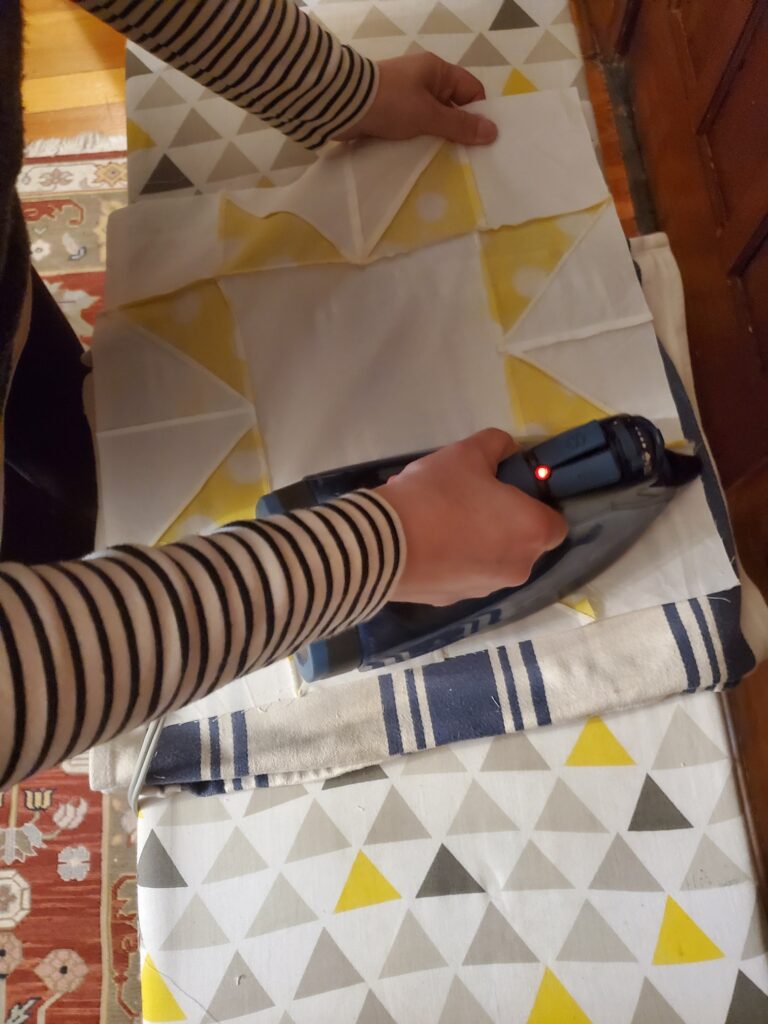
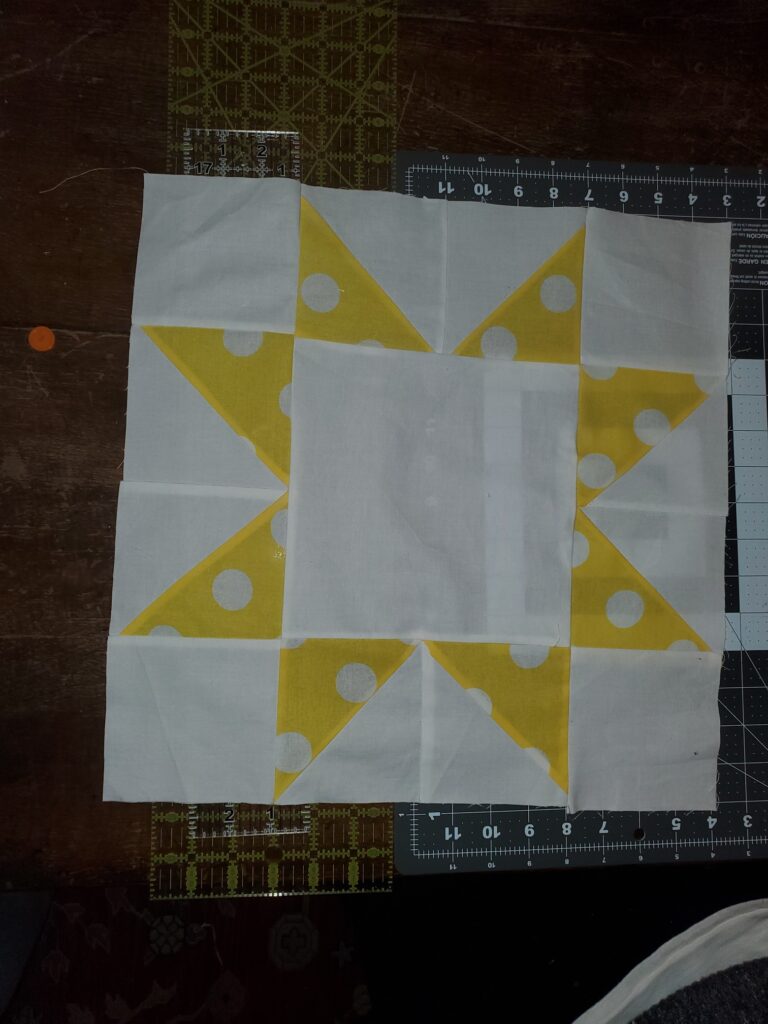
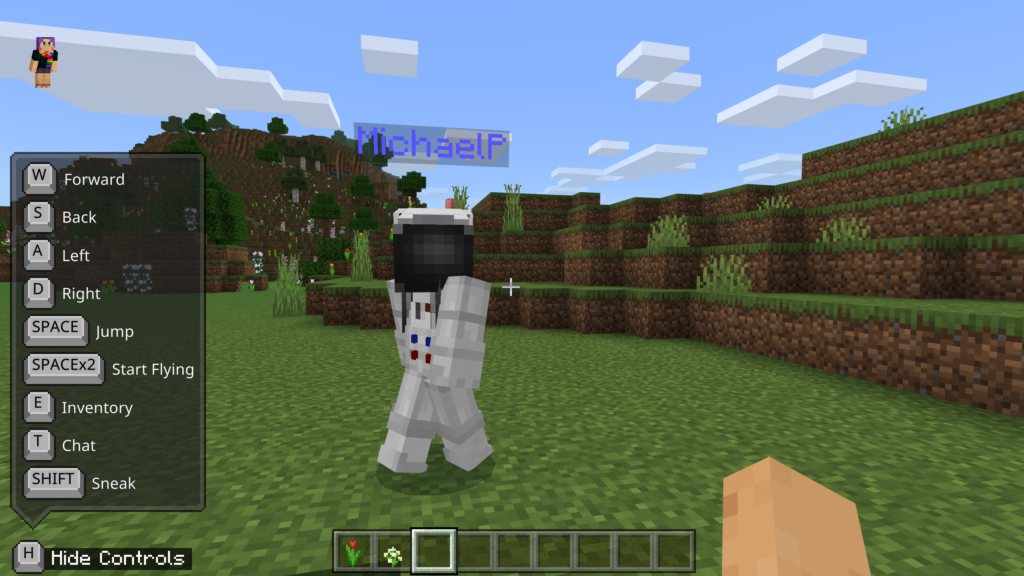
This week, to the joy of my little ones, we tried Minecraft. I learnt how to make a new skin so that I didn’t look the same as the person sitting next to me. I planted some flowers and destroyed some walls. There are some lessons plans available for using Minecraft in the classroom and discovered the IT lab is open to bring groups of students for learning too. I see Minecraft as a Lego building type activity, which is fun and very accessible for almost all ages.
There were so many excellent ideas and tips that Joanna discussed during her presentation.
Some of my favourites were:
Mood Scale: On a scale of guinea pig, how are you feeling today? Tara Wood has lots of photos to use. Or some are below to start! 🙂
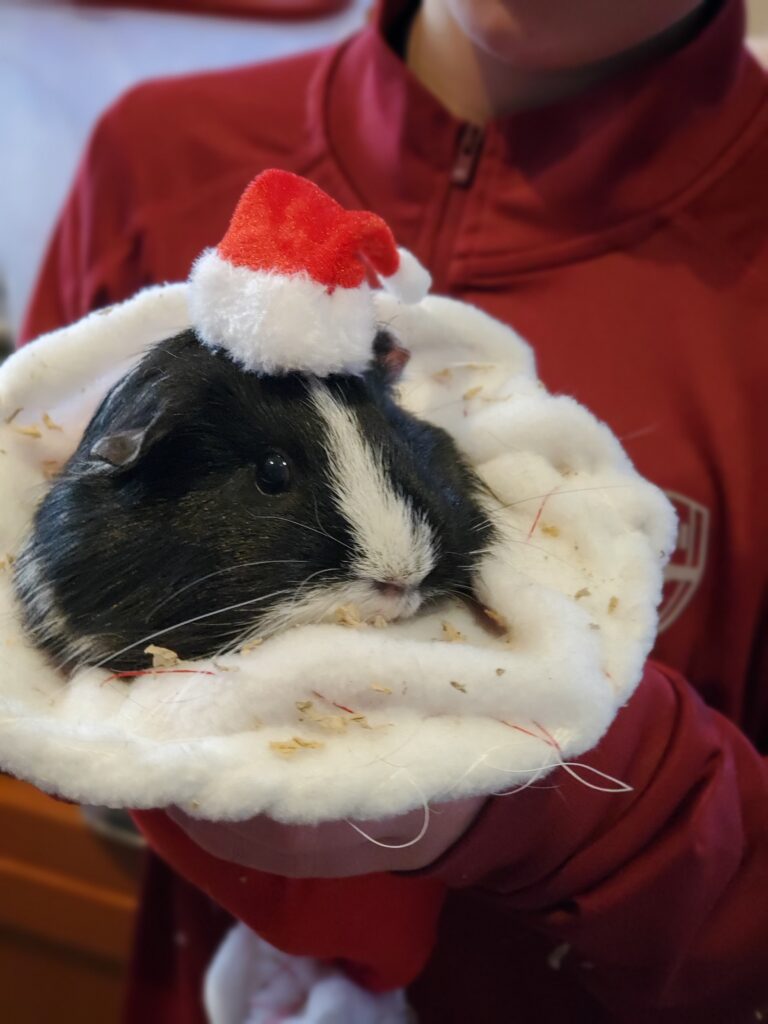
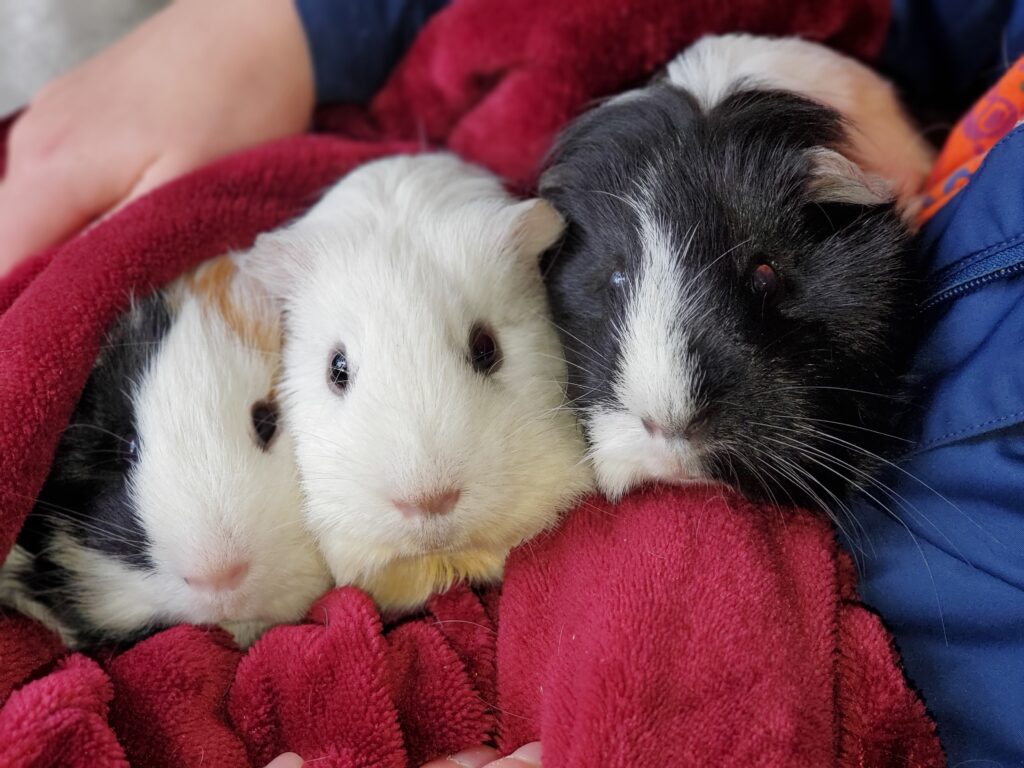
Make a class created bulletin board, it gives ownership to students for class and the students curate and update it.
Creative ways to take Attendance: use mood scale or a “would you rather” question – students write their name under their choice, then you can talk about the question during class.
Building Connection:
“Olympics” on the last day of school, Feel Good Friday, Tea Time, etc.
Memes are always a hit. Include drawing space at the side of quizzes for doodling.
Routines give predictability to students.
– Would you rather questions (use whiteboard and student names on magnets or have students write names)
You can create a class playlist to listen to while students get settled.
2. Check in with students: use mood scales, finger scales, thumbs (discreet), also write notes with post its
3. Ask students what works best for them!
4. Go slow, do only what works for you.
When getting to know students, be authentic: can bring pictures of yourself and your family, places you have been…
Visual Learners –
Have visuals as a prompt for learners, create a whole class visual schedule – spend time every day going through the daily schedule, so they can ask questions about their day.
Visual Prompt: In the morning, on screen have saved the following template:
Reminders! First……, then….. Announcements:
Assessment
Assessment as Learning: involving students in their learning process as n opportunity to practice their skills. Involves self-assessment, feedback, and reflection.
Proficiency Scale:
Talk to students about the language of the scale. When you give an assignment, you model what the proficiency scale looks like. Give them samples, practice writing feedback, highlighting the aspects, then the students assess the samples. Then look at them all as a class. Make sure you have anchor charts so it’s always visible on the wall.
Co-Creating a rubric –
1. Set the learning intention: what skill do you want the class to learn, practice, and understand?
2. Brainstorm criteria as a whole class, ten small groups, lots of voting, expressing opinions etc.
3. Show a sample of work (a bad one.) What do you notice? Write those things down as criteria.
Have the proficiency scale with the proficient category described. Then students can highlight what they have achieved/met and put arrows into the developing or extending categories, if needed.
Use videos with students to show what they know – i.e. students create a how to video to cover instruction writing. Flipgrid – is an excellent for students videos (just a join code needed for students).
Digital assessment:
Students curate their digital folder. They have to support their choice for work in the folder and how it meets the leaning standard. This is self-assessment.
ALWAYS use mentor texts: to help kids learn how to write properly and have a guideline. Make the assignment topics fun so you get buy-in.

Now what?
Now it’s time to try out these tips and ideas in my practicum! Will I remember them all? Unlikely! But will I try to use as many as I can? Yes!
JOANNA’S SUGGESTED RESOURCES:
Liz Kleinrock: @teachntransform https://twitter.com/teachntransform?lang=en
Marie Batiste: Decolonizing Education, nourishing the Learning Spirit (Available here)
Bob Joseph: 21 Things You May Not Know About the Indian Act.
Lisa Baylis: Self-compassion for educators (Available here)
Fawn Nguyen: visual Math resources – Excellent resources and ideas. This is a link to a great article for new teachers: https://www.fawnnguyen.com/teach/dear-new-teachers
Math:
https://www.commonsense.org/education/app/plickers
From IT presentation: – Joanna
Liz Kleinrock: @teachntransform
Marie Batiste: Decolonizing Education, nourishing the learning spirit
Bob Joseph: 21 things you may not know about the Indian Act.
Lisa Baylis: Self-compassion for educators
Fawn Nguyen: visual Math resources
Jo Bowler – hands on math resources/ideas
Tara Wood – photos for Mood Scale
Recommended Books:
Community Building:
Tribes Learning Communities by Jeanne Gibbs
Charles
When we are Kind
Wolverine and Little Thunder
The Invisible Boy – support empathy building
Wonder Walkers
I Like Me – Nancy Carlson
Roxaboxen
Ralph Tells a Story
ABC of Art
What do you do with an Idea?
The Crocodile and the Dentist
My Teacher is a Monster by Peter Brown
Slinky Malinky
Poems of Jeremy Boon
Cremation of Sam McGee by Robert W Service
The Little Yellow Leaf (Carin?)
The Plot Chicken
The Stinky Cheese Man and Fairly Stupid stories
The Proudest Blue
To Market, to Market
Dont touch my hair!
**Rocket Writes a Story
Th Little Duck St
We are Water Protectors
The Sweater – girl makes Cowichan sweaters with her grandma
White Fang
*Silverwing by Kenneth Oppel (A story about bats which can support students identity)
The Prince of the Pond by Donna Jo Napoli
The Summer of Riley by Eve Bunting
Clementine’s Letter by Sara Pennypacker
The Spiderwick Chronicles by Holly Black and Tony DiTerlizzi
Jeremy Thatcher Dragon Hatcher by Bruce Coville
*How to Steal a Dog by Barbara O’Connor
Listening for Lions by Gloria Whelan
the Small Adventure of Popeye and Elvis by Barbara O’Connor
Turtle in Paradise by Jennifer L. Holm
Rump: The True Story of Rumplestiltskin by Liesl Shurtliff
*Flora and Ulysses: The Illuminated Adventures by Kate DiCamillo
The One and Only Ivan by Katherine Applegate
“A Day with Yahyah” (First Nations + Science + Biodiversity)
“Little Bear’s Vision Quest” – can adapt for readers theatre (gr 4?)
The Giving Tree by Leah Donton (social studies – stories passing down from generations, traditions & celebrations being important)
“The Cedar Tree” – a story about a man who always gave away his belongings and the creator. The Musqueam language & cultural development
Indigenous Theories of Learning or Resources:
Lorna Williams
Kim Anderson
Martin Brokenleg
Blair Stonechild
First Voices.com
Dr Joanne Archibald
First Peoples resources:
Musqueam
“In their own words” – by CBC – Residential school survivors own stories
Beyond 94 – Truth & Reconciliation in Canada teacher guide PDF – covers how to teach about Intergenerational trauma, etc.
https://legacyofhope.ca/ – Workshops, poetry activity, videos on residential schools, 60s scoop, Inuit, forgotten Metis,
Farmtoschoolbc.ca – Lesson plans for Native Plant Walk & Legends local to BC
First Peoples map of BC – provides proper pronunciations for First Nations places on the map
SD learning kits – The Seven Teachings by David Courchene Jr. (connects to medicine wheel, season, can read throughout the year – In Sept can connect to classroom agreement)
https://engage.sd62.bc.ca/
Then go to the link for Na’tsa’maht Indigenous Education Then scroll down to Teacher Resources.
Strong Nations Publishing (has Indigenous books and lesson plans to go along with them)
www.ourspiritssoar.com (lesson and unit plans)
Math with Indigenous Story telling: https://smallnumber.softr.app/
Anona Kampe – Storyteller – beading and stories
Suzanne Camp – Comox school district, beading & storytelling – The Bead Timeline – https://www.comoxvalleyschools.ca/indigenous-education/beaded-timeline/
https://drive.google.com/drive/folders/12vf431xoiCz5yMeLXO
https://www.nfb.ca/playlistindigenous-cinema-classroom-ages-611/
https://www.nfb.ca/education/educational-playlists/#indigenous-voices-and-reconciliation
Colten Bushy murder Study guide: https://www3.onf.ca/sg2/NFB_We_Will_Stand_Up_EN.pdf (Gr 7 +) (has activities, anti-racism activities etc)
iportal from Univ. of Saskatchewan (database of electronic resources focusing on indigenous peoples of Canada) (includes maps of all First Nations & related resources in Canada)
Social Studies:
Historical thinking website https://historicalthinking.ca/
Royal BC Museum: Truth & Reconciliation Lesson Plan
Current events teaching: CBC News, CTV, The Tvee, Capital Daily, Vic News
Indig. News: IndigNews, Windspeaker
International news: The Guardian, BBC World New, AlJazeera, NPR
News for children: Teaching Kids News (gr 2-8) – Articles have prompts for writing, discussion, and further reading; and grammar features.
News videos, articles, quizzes for kids: CBBC Newsround
Current events publication with questions for grades 5-7 (Level 1) – What in the World?
Resources for students to learn about fake news & foster critical thinking: iReporter – BBC News, Doubt it or Trust it?, Fake or Foto, NewsWise
Strategies for teaching controversial issues: The Green Teacher (BC)
BCTF Social Justice – Teaching resources: Indigenous Education, anti-racism, disability, the economy, the environment, LGBTQ2S+, peace, and the status of women
Ideas for Teaching CUrrent events:
Ch 8, “Current Event Case study” by Johnson, E., & Ramos, E.
Learning for Justice: Lessons plans, student tasks, teaching strategies, films, etc. Topics: Race & ethnicity, religion, ability, class, immigration, gender & sexual identity, bullying & bias, rights & activism.
Example Activity: Introduce a current event with a picture. Ask students to write down something from their:
Head (What do you know about this image? what do you know that is confirmed by everyone?/ what do you know that is up for debate? Do you have questions about it?
Heart (How does this image make you feel)
Conscience (what needs to happen?)
Place in History.org – adaptable activities for learning current events with kids
Podcast: ‘ologies’
IT:
Prezzi – works well with Microsoft edge
I have started sewing the little squares together. I worked out a quick way to do this, by sewing two squares together, sewing one line of stitching down the left side of the centre diagonal, then sewing another line of stitching back up the right side of the centre diagonal line. I sewed one yellow square and one white square, right sides together, then split them into two pieces on the diagonal. Have a look at the video below to see what I am talking about. I have about 48 of these to sew and cut. Once that is done I will need to press the squares flat and ‘square’ them. Squaring the squares is a process of ensuring they are perfect 90 degree squares by measuring them along two sides and trimming them with the ruler, then rotating and repeating to the other two sides. This is well demonstrated in this video below:
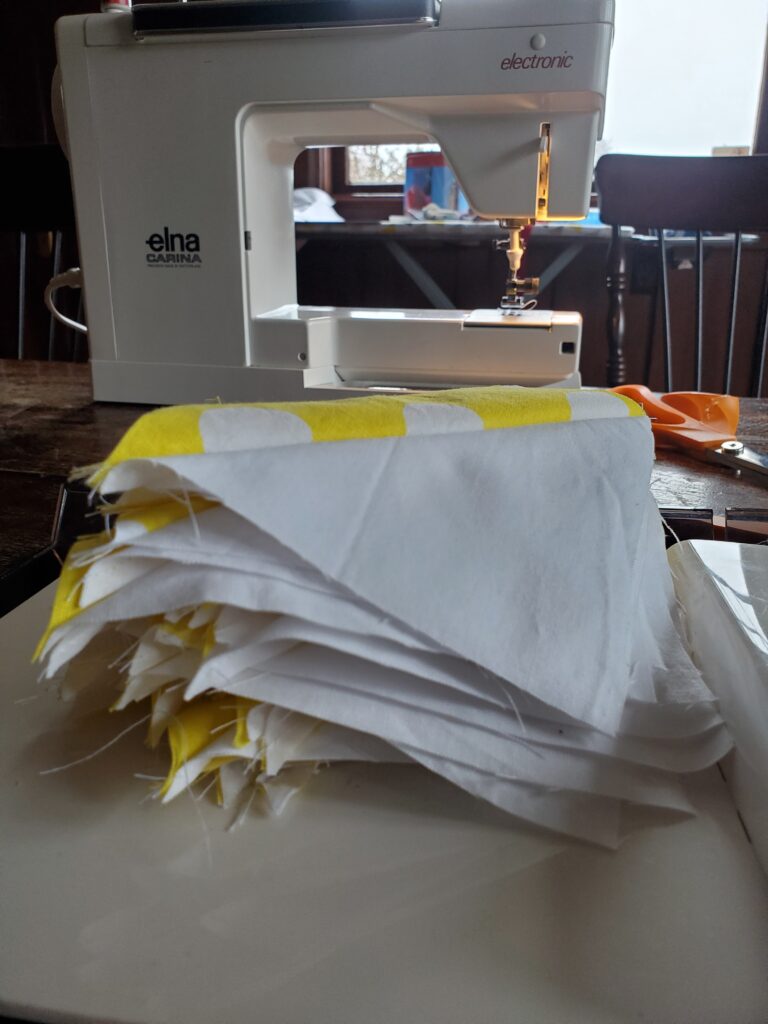
I have been sewing all these little squares for my quilt, see the video below. My sewing machine is making some funny noises, so I am worried it might not last to see through this project. It is a mechanical sounding problem and the machine is possibly from the 90’s. Here is a screencast tutorial on how to sew the small squares together to make two squares with a triangle of white and yellow each, which is a real time saver.
This was the scariest moment, cutting the fabric. Making sure I follow the lines exactly and tracing the template I created. After cutting out a few of these, I realized that it was going to be almost impossible to sew the curved yellow piece to the corresponding white curved piece.
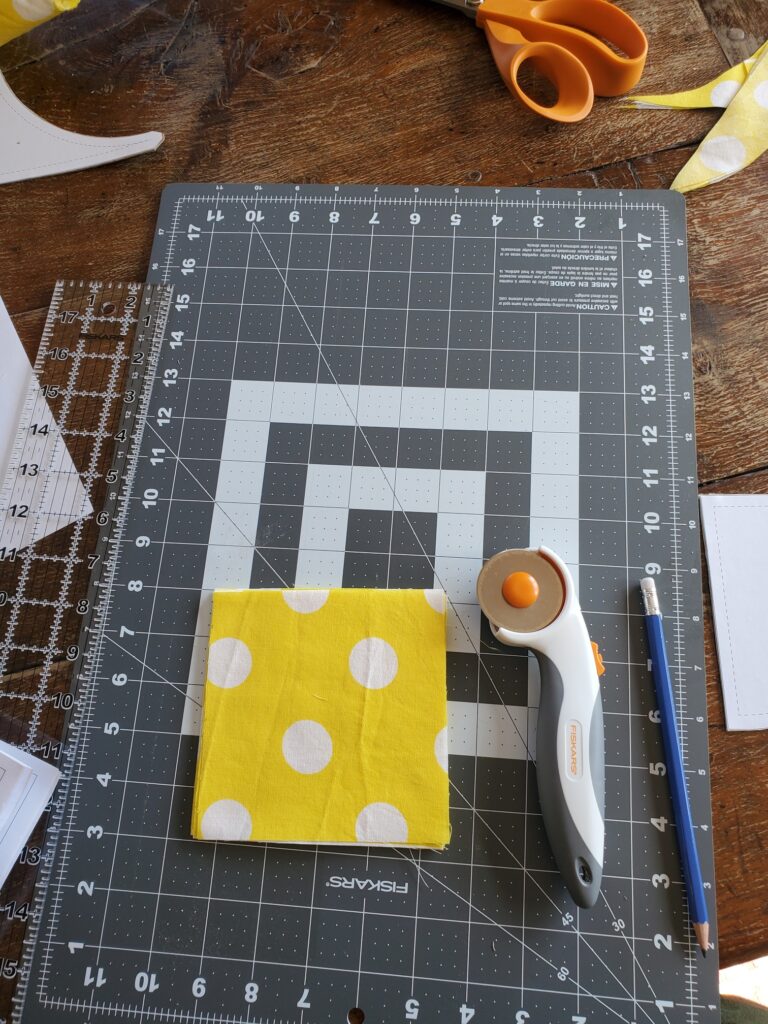
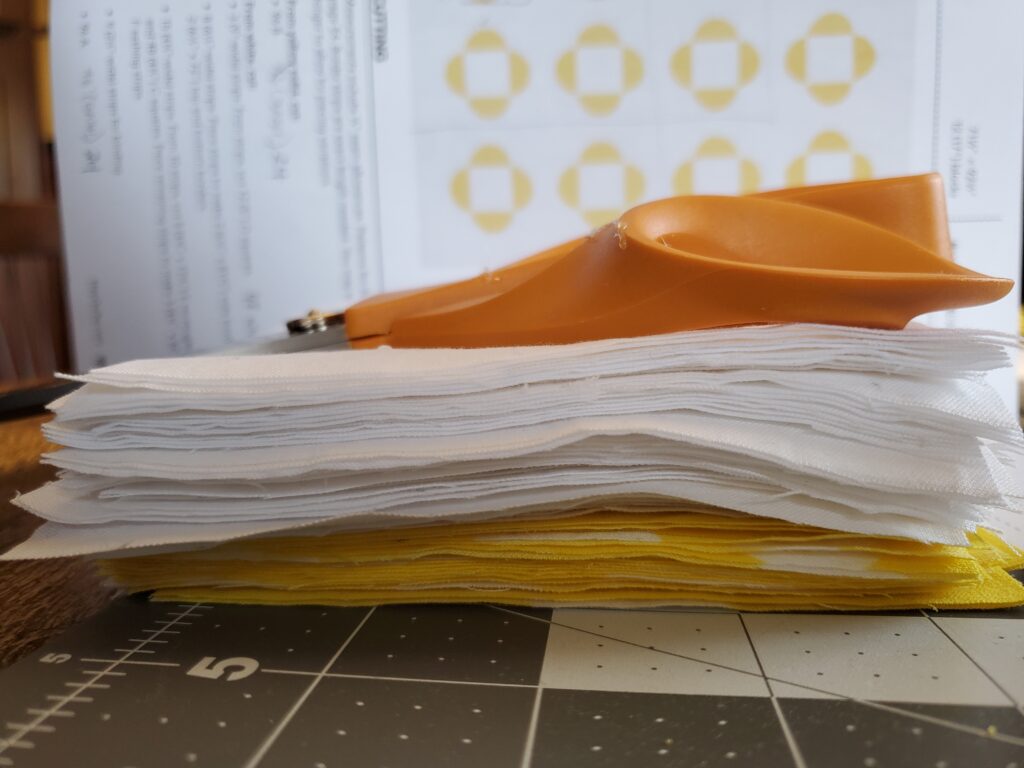
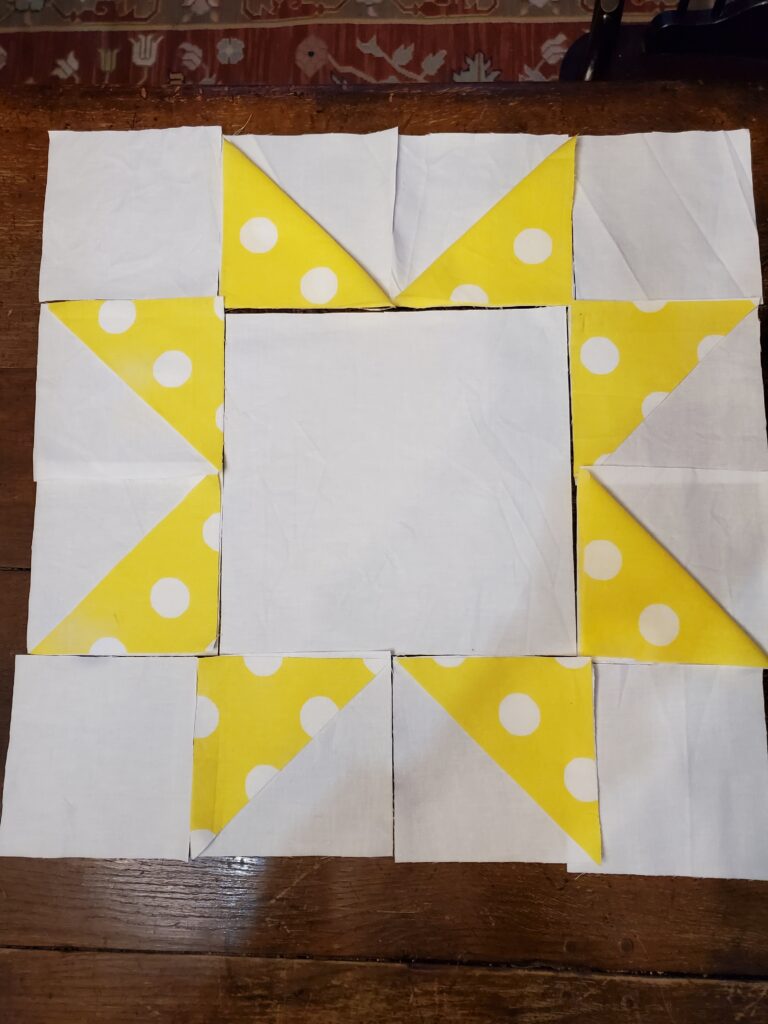
There are so many types of fabric, colours and prints to choose from! It is so overwhelming to visit the fabric store. One website I found that helps choose fabric is this one. Silver bobbin website helps with the weight and type of material best suited for quilts. I really like the white and yellow of the pattern that I chose, so I am looking for something that will match that colour scheme, since my quilt will be for a baby and I don’t want to stereotype the colour for the baby’s gender.

My lovely friend came over this weekend to give moral support for the first cut of the fabric, something that has been scaring me for weeks! I had to wash and dry the fabric before cutting to make sure it doesn’t shrink in a warped way when it is in the quilt.
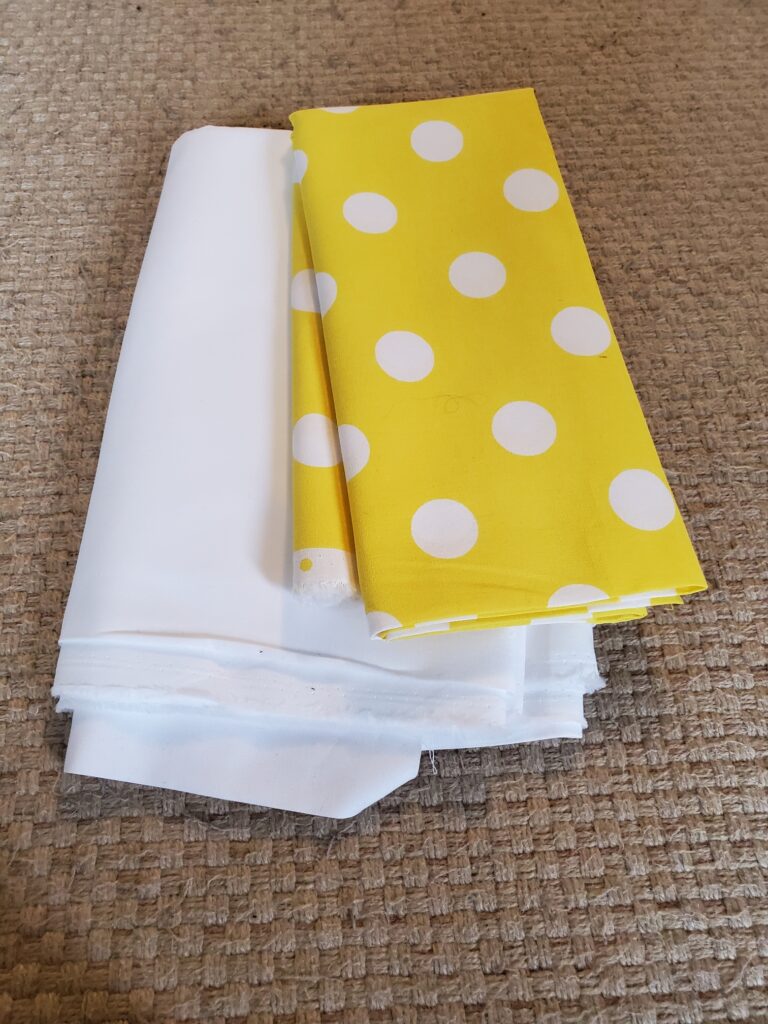
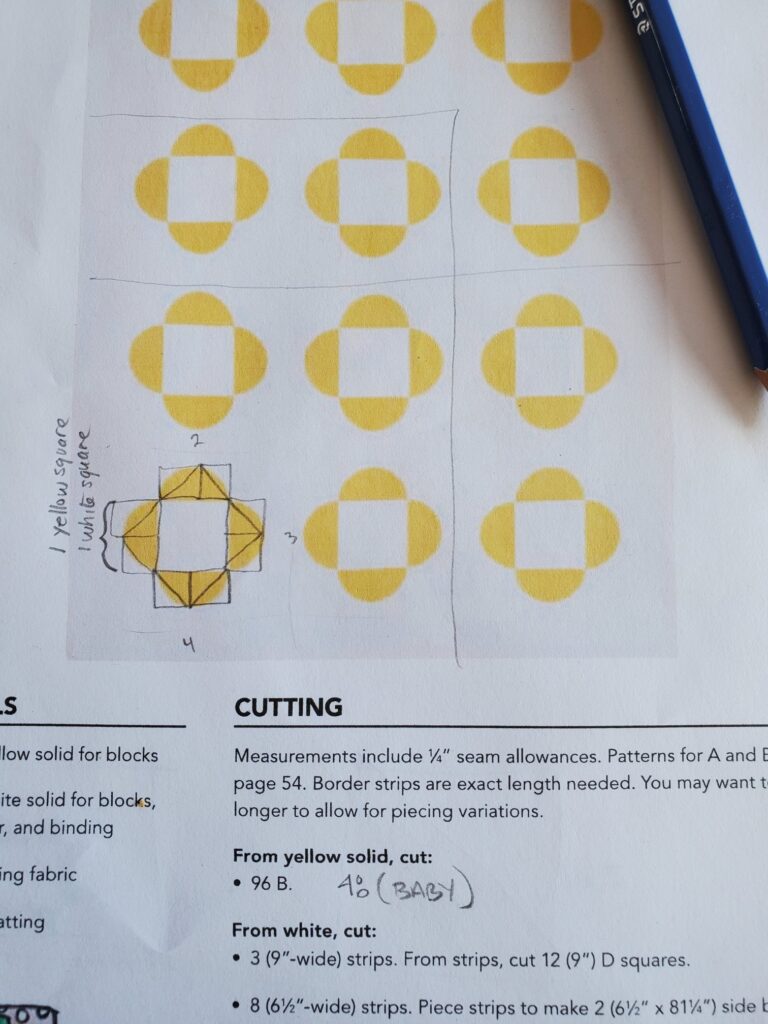
Careful fabric cutting is very important to have a beautiful quilt. Here is a video which demonstrates the techniques for beginners which I found helpful. It also shows how to measure pieces, which is not as easy as it might seem!
One problem with the pattern: I can cut the curved yellow pieces, although it takes a long time, but sewing them together is almost impossible! My experienced friend said that even she would not attempt to sew the curved pieces together. The problem is that you have to sew together the curved yellow and its corresponding white outside curve to complete the square, right sides together, but the curved edges don’t match up at all! So we did a sneaky redesign, making each curved yellow into a triangle, which will make it possible to cut and sew more quickly and easily for a beginner like me!
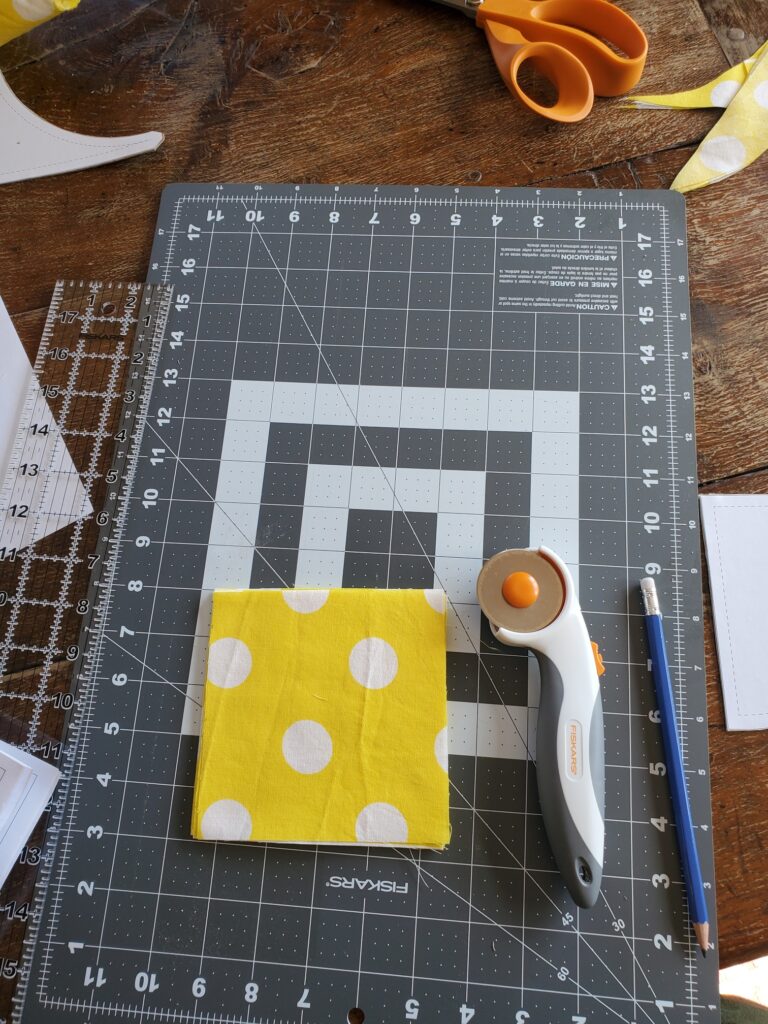
Since I am making 6 large blocks to sew together(half of the pattern), I calculated that I need 24 of these yellow squares. I also need 24 white squares, plus 16 more of the same size for the corners of the blocks, in addition to the strips of white to join the blocks together and a which square for inside each block…phew!